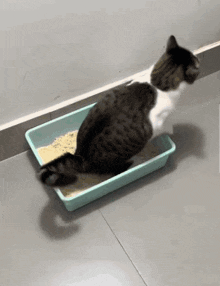Whether you’re preparing for a big exam or just trying to keep up with your coursework, finding the right study strategies can make all the difference. Not everyone learns the same way, so experimenting with different techniques can help you discover what works best for you. After some research, consulting with my friends, and working on my own study habits, I’ve compiled 10 creative and effective study strategies you should try!

Photo by Lum3n from Pexels
Let us slide into your dms 🥰
Get notified of top trending articles like this one every week! (we won't spam you)1. The Pomodoro Technique: Study Smarter, Not Longer
If marathon study sessions leave you feeling burnt out, the Pomodoro Technique might be your answer. This strategy, also my personal favorite, involves breaking your study time into 25-minute focused intervals (called “Pomodoros”) followed by a 5-minute break. After four cycles, you take a longer 15-30 minute break.
These short bursts of concentration help you stay focused and prevent burnout. Bonus tip: use your breaks to hydrate, stretch, or even do a quick TikTok scroll to recharge! And, if you really want to get creative, one of my teachers last year actually used a Pomodoro Cat method that my entire class found super entertaining. A little bit of a jump-scare, yes, but a pretty funny one that kept us productive and smiling.
Take the Quiz: What Type of Notes Should I Take?
Discover the best note-taking method for your learning style!
2. The Feynman Technique: Teach to Learn
Ever heard the saying, “If you can’t explain it simply, you don’t understand it well enough?” That’s the idea behind the Feynman Technique. Start by choosing a topic you’re studying, and then try to explain it in simple terms as if you’re teaching it to a friend. This process helps pinpoint areas where you’re fuzzy and makes you review concepts until they’re crystal clear. For me, this worked best with my friends when we studied for our AP Biology exam by explaining the concepts to each other!
3. Color-Coded Notes: Make Studying Fun
Turn your notes into a rainbow of knowledge! Assign colors to different topics, themes, or types of information. For example, I use green for definitions, blue for examples, and pink for key concepts. The visual distinction helps your brain categorize and recall information more easily. Plus, it makes your notes look super Instagram-worthy and aesthetic (cue all the Pinterest boards!)
4. Active Recall: Bring the Information to You
Instead of just passively reading your notes, actively test yourself on the material. Flashcards are a classic tool for this, but you can also create quizzes or write questions in the margins of your notes. Active recall strengthens memory connections and is proven to be more effective than re-reading or highlighting. One of my favorite methods is reading my notes out loud, then again in my head, and repeating those 2 with my eyes closed until I can remember all the key concepts!
5. Mind Mapping: Connect the Dots
For visual learners, mind mapping can be a game-changer. Start with a central topic, then draw branches to connect related ideas, subtopics, or key points. This strategy not only organizes information but also helps you see relationships between concepts. Use colors, symbols, or even doodles to make your map more engaging!
6. The Cornell Method: Master Note-Taking
This tried-and-true method divides your notebook page into three sections: a large right-hand column for notes, a smaller left-hand column for questions or key points, and a bottom section for a summary. After class, review your notes by filling in the left column and writing the summary. It’s a structured way to review and reinforce what you’ve learned. I’ve found that this works best for humanities, like social studies, government, and history classes!
7. Study Groups: Strength in Numbers
Team up with classmates to form a study group! Not only can you exchange knowledge and clarify doubts, but you’ll also get exposed to different perspectives. Take turns teaching each other or quizzing the group on tough topics, whether in a library, on FaceTime, or even in a cute cafe. Just make sure to keep the group focused—study groups can sometimes turn into social hangouts if you’re not careful.
8. Spaced Repetition: Timing Is Everything
Spaced repetition involves reviewing material at increasing intervals of time—think day one, day three, day seven, and so on. This strategy leverages your brain’s natural forgetting curve, reinforcing material just before you’d typically forget it. Apps like Anki or Quizlet make spaced repetition super easy to implement.
9. The 3-2-1 Technique: Simplify Your Review
After each study session, summarize three key ideas you learned, write down two questions you still have, and note one connection to something you already know. This method encourages deeper thinking, helps you identify gaps in your understanding, and strengthens long-term retention!
10. Digital Detox: Minimize Distractions
Let’s be real, your phone is probably your biggest distraction. Set boundaries by turning off notifications, using focus apps like Forest, or placing your phone in another room while studying. Creating a distraction-free zone helps you stay in the zone and get more done in less time.
Bonus Tips!
Keep a planner or digital calendar like Google Calendar to track assignments, deadlines, and study sessions. Also, get enough sleep, eat brain-boosting foods (hello, antioxidant-filled blueberries!), and stay hydrated (make good use of your Owalas and Stanley Tumblers and Hydroflasks). And finally, a positive mindset can work wonders. Trust me on that one :)

Photo by Julia M Cameron from Pexels
Conclusion
The key to effective studying is personalization. It definitely took me a few tries to refine my study strategies, and even to this day, it’s still undergoing some progress! But for now, try out a few of these strategies and tweak them to fit your style.
Some people thrive on colorful mind maps, while others swear by quiet, distraction-free spaces. The most important thing is to stay consistent and believe in your ability to succeed.
You’ve got this. Remember, don’t overwork yourself, go ace those exams and make yourself proud!
















